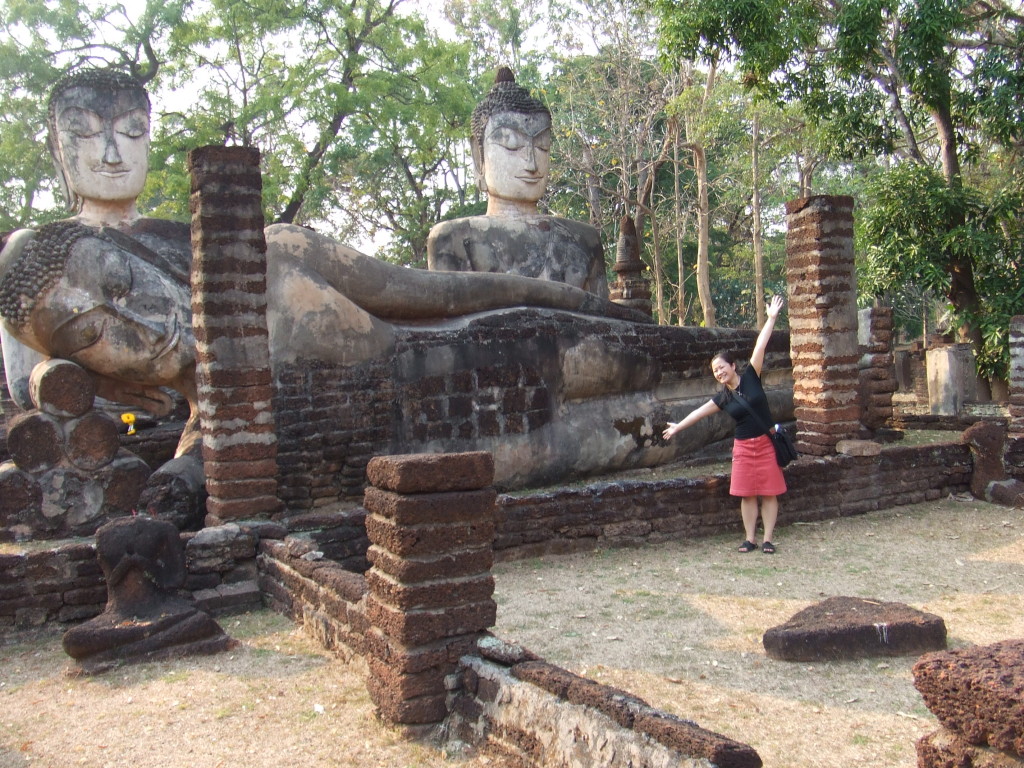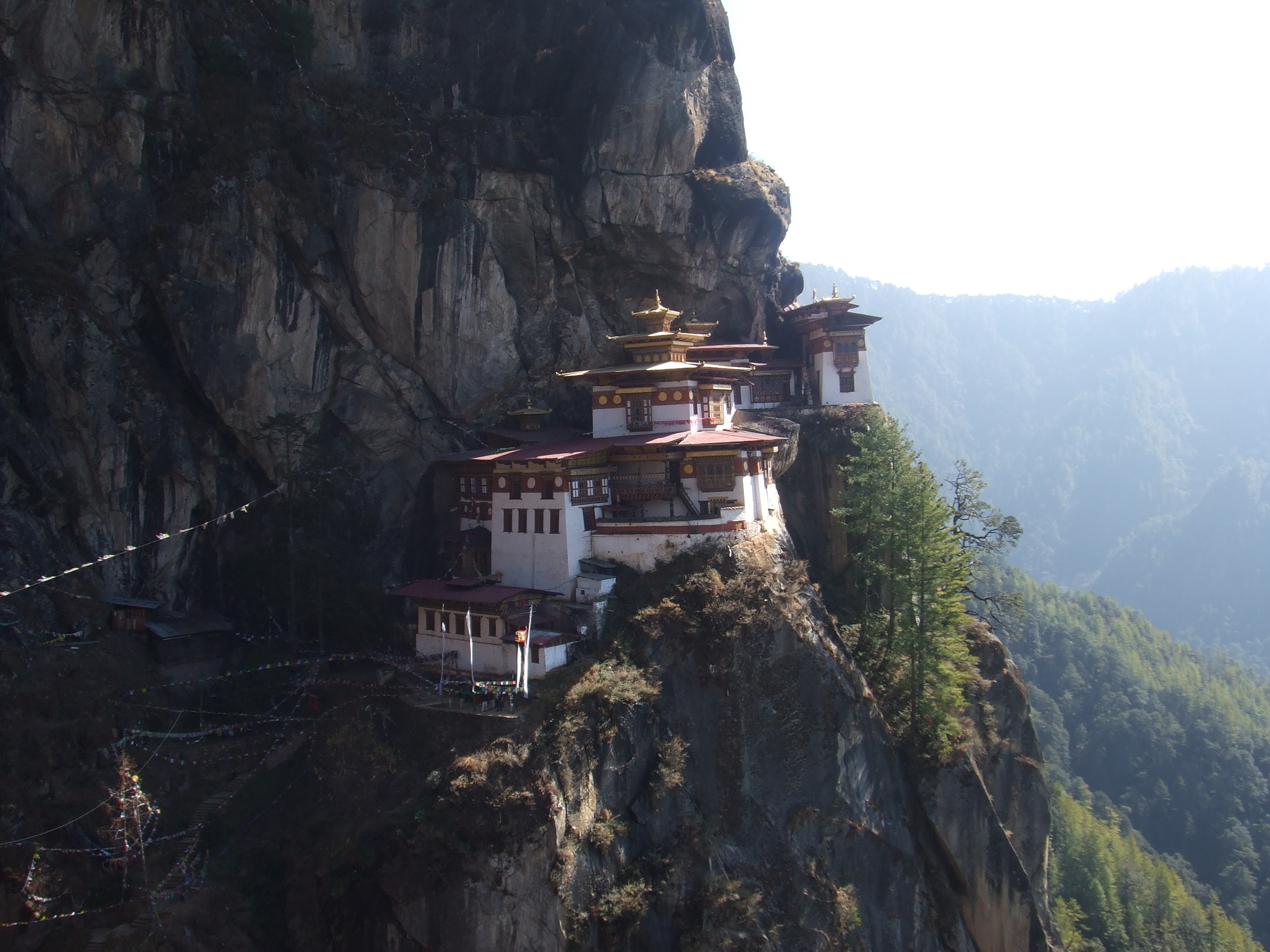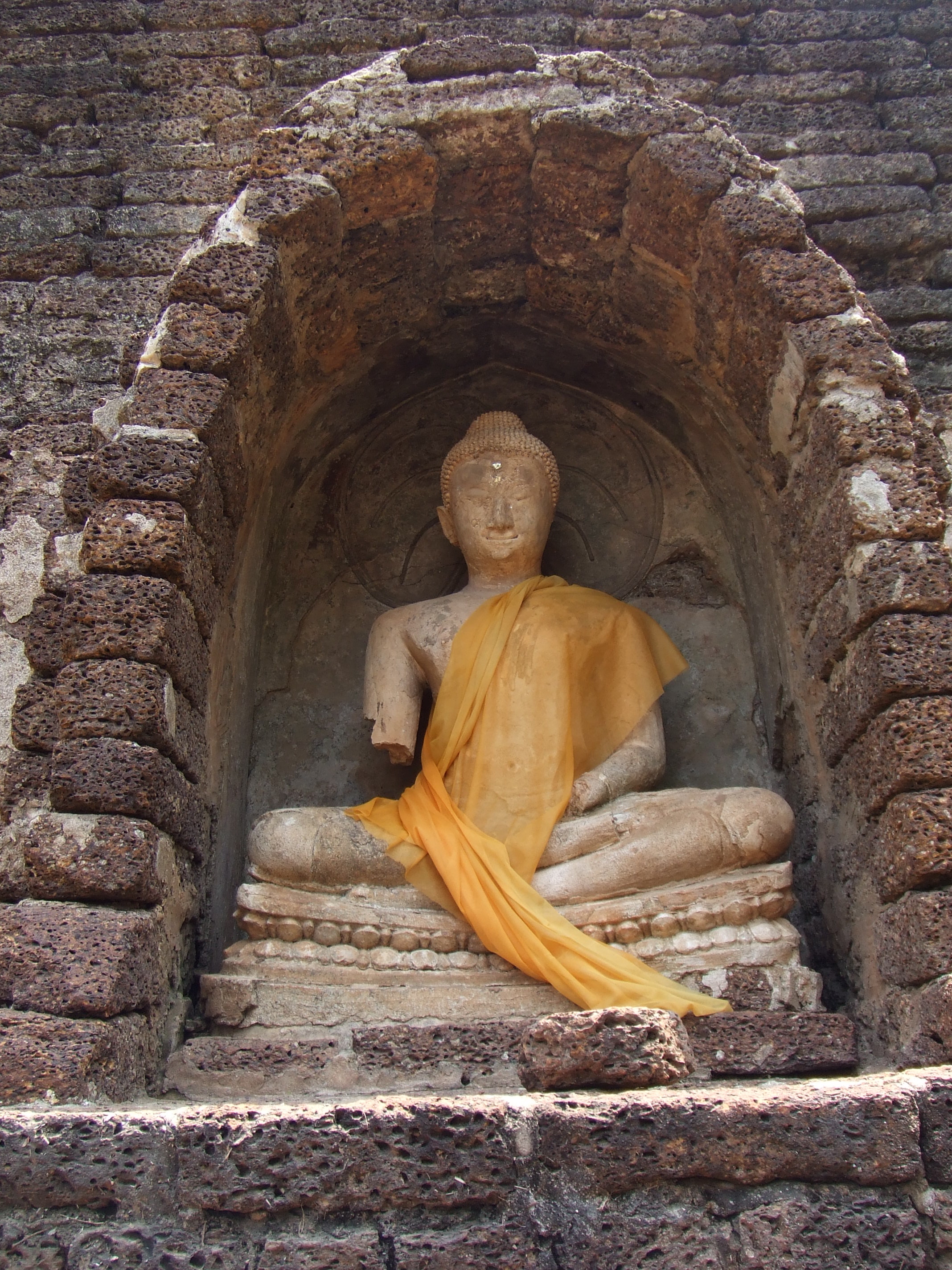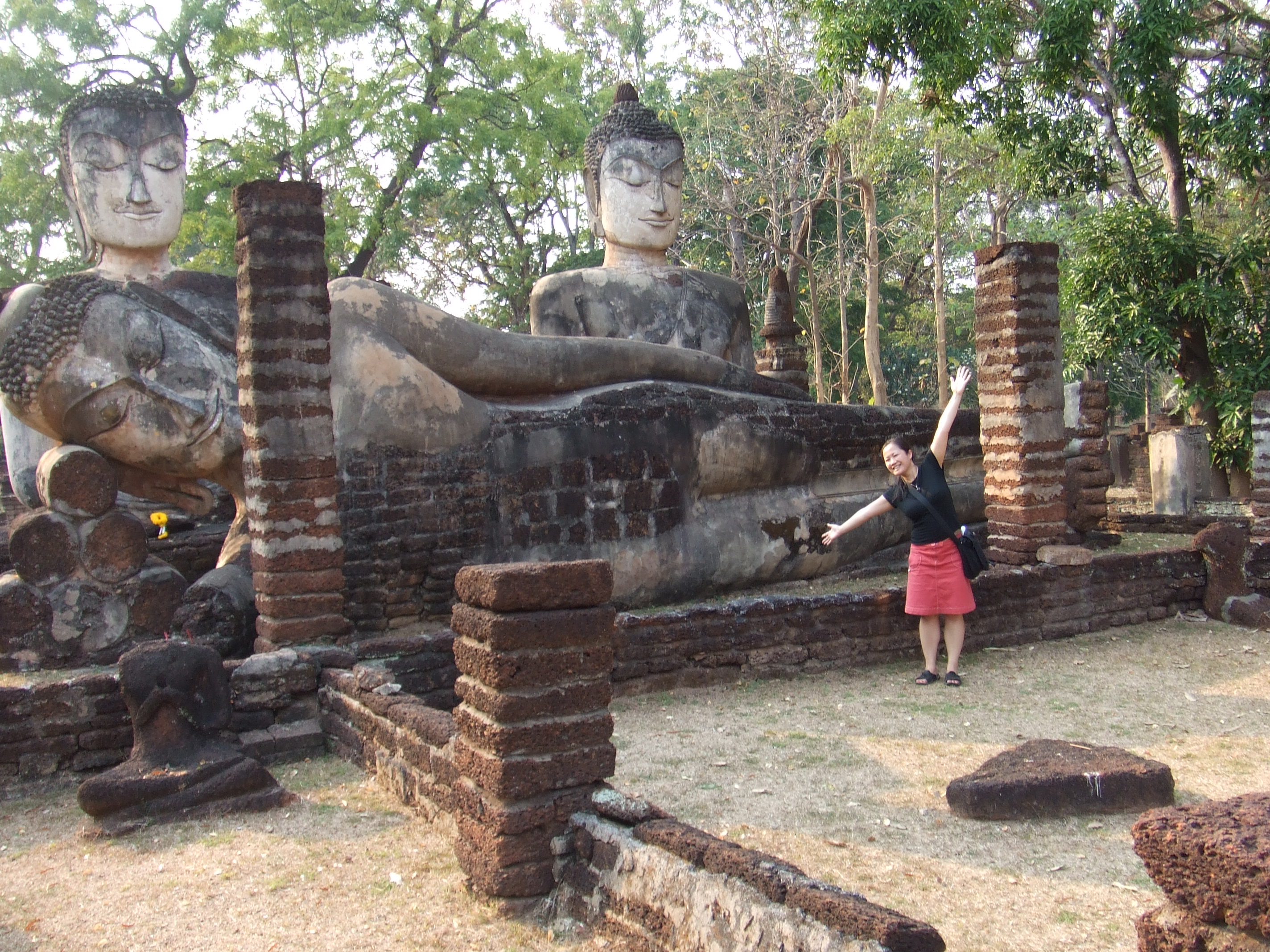Imagine This Monastery Perched Precariously on a Mountain
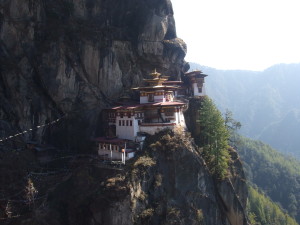 Isn't it amazing how Taktsang Monastery was built on the cliffside of a mountain? As one of the highlights of Bhutan, "Tiger's Nest" continues to attract visitors, including myself. After hiking most of the morning to get to it, I glimpsed it for the first time from afar: the monastery looked unbelievably tiny with the gray jagged mountainside as the backdrop. It appeared as if at any minute, it could just topple over into the valley. Built in 1692, and after a couple of fires and renovations, it still remains as a fully functioning place of worship. When I got closer, I thought about how unbelievably dangerous it was back then to build it on the side of a cliff with no real foothold in the mountain to establish a firm foundation. And yet it was done, miracles of miracles, in order for this resplendent Buddhist monastery to be as close to peace and the skies as possible.
Isn't it amazing how Taktsang Monastery was built on the cliffside of a mountain? As one of the highlights of Bhutan, "Tiger's Nest" continues to attract visitors, including myself. After hiking most of the morning to get to it, I glimpsed it for the first time from afar: the monastery looked unbelievably tiny with the gray jagged mountainside as the backdrop. It appeared as if at any minute, it could just topple over into the valley. Built in 1692, and after a couple of fires and renovations, it still remains as a fully functioning place of worship. When I got closer, I thought about how unbelievably dangerous it was back then to build it on the side of a cliff with no real foothold in the mountain to establish a firm foundation. And yet it was done, miracles of miracles, in order for this resplendent Buddhist monastery to be as close to peace and the skies as possible.
Once inside, the old wood creaked underneath my shoes as I passed through the hallways. I wondered what the walls told of stories of the past and present, and the excitement that pilgrims felt when they first arrived at such a special place after an arduous journey.
"Stay beside death and cry? No, you keep moving..."
 Neither one of us said anything for several minutes. Only the occasional slurping of tea could be heard.
Neither one of us said anything for several minutes. Only the occasional slurping of tea could be heard.
“When I little girl, I so scared," said Ann, a Laotian I had met earlier that day and invited me in for tea.
"We living in village close to Sepon, near eastern border between Laos and Vietnam. We so poor, my family. Always not enough to eat. And every day, I look outside and bombs falling and falling. Everything burning: houses, animals, my people. One day, our village on fire so my father take us. To another village. For many days, we walking and walking."
She paused. Then she said, "And on road, we see so many dead bodies. But my father always say to us to keep moving, must keep moving.”
Here was a woman who had seen her entire country razed to the ground and yet she thought I was brave for traveling solo in Laos. She had done the bravest thing of all: to put one foot in front of the other on a corpse-riddled road. Just to survive. To not let the most ghastly sights slow her down.
It was a secret war in Laos from 1964 to 1973 that had raged all throughout the country, occupied by the Americans and Vietnamese at the cost of thousands of innocent lives. Even though Laos was technically a neutral state, the Vietnamese stayed anyway and took over the eastern part of Laos along the infamous Ho Chi Minh trail. And for many years, the Americans dropped bombs to stop the spread of communism in and around the Ho Chi Minh trail. Not many knew about Laos and their unwanted role in it. It was forgotten, hidden in CIA files and memos that only recently came to light.
“Ann, I can’t…imagine how you must’ve felt seeing all those dead bodies.”
“Yes, what to do? Stay beside death and cry? No, you move. Always moving. Must leave war and death behind you.” She sighed, her long breath coming deep from her belly, and she set her teacup down for the last time.
She didn’t say any more about it. I prompted her to continue, but she was silent. Her face looked sadder, and I stopped my queries that seemed to pull down the corners of her mouth. I knew I had gone as far as I could with her about the war.
Instead, she leaned back in her chair and we chatted politely about my trip to Lao Pako the next day, and the upcoming journey north to Luang Prabang. We finished our talk just in time for the power to go out, as it always seemed to at the same time every night. She lit a candle, placed it in a metal holder and then gave it to me, her palms encircling my own.
“Good luck to you. I enjoy our talk,” she said, her eyes searching my face.
“Thank you. I really appreciated it and more than anything I—”
“Ssssh,” she hushed me. “No need to say. My country suffer so much during war. I lucky am alive. Live your life.”
Bowing my head out of respect, I clasped my hands together and she reciprocated. When I lifted my head, she had already crossed the room, the long back panel of her silk dress swirling behind her.
This was an excerpt from THE SAME SKY. If you're like to read more, you can click here.
Happy Mother's Day!
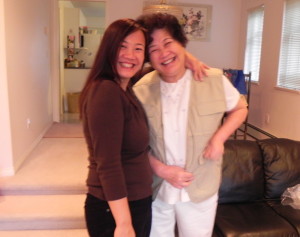
Whenever I see this photo of my mum and me, I always smile. We were both laughing about something, perhaps over a funny story. I have such few photos of just my mum and me - I don't know why. Perhaps we are usually so focused on getting everyone else in the photo.
We live so far away - I in New York and she in Vancouver. I think about my parents a lot, and today on Mother's Day, I'm missing her. Two cool things about my mum: she has such a great knack for storytelling, and perhaps that's where my sisters and I developed our tendency to over-dramatize a story! My mum and I also share a favorite pastime: we both love to eat and TALK about food, any kind as long as it's delicious.
Mum - Happy Mother's Day to you! I hope to soon feast on good Vancouver dimsum and share some funny stories again with you.
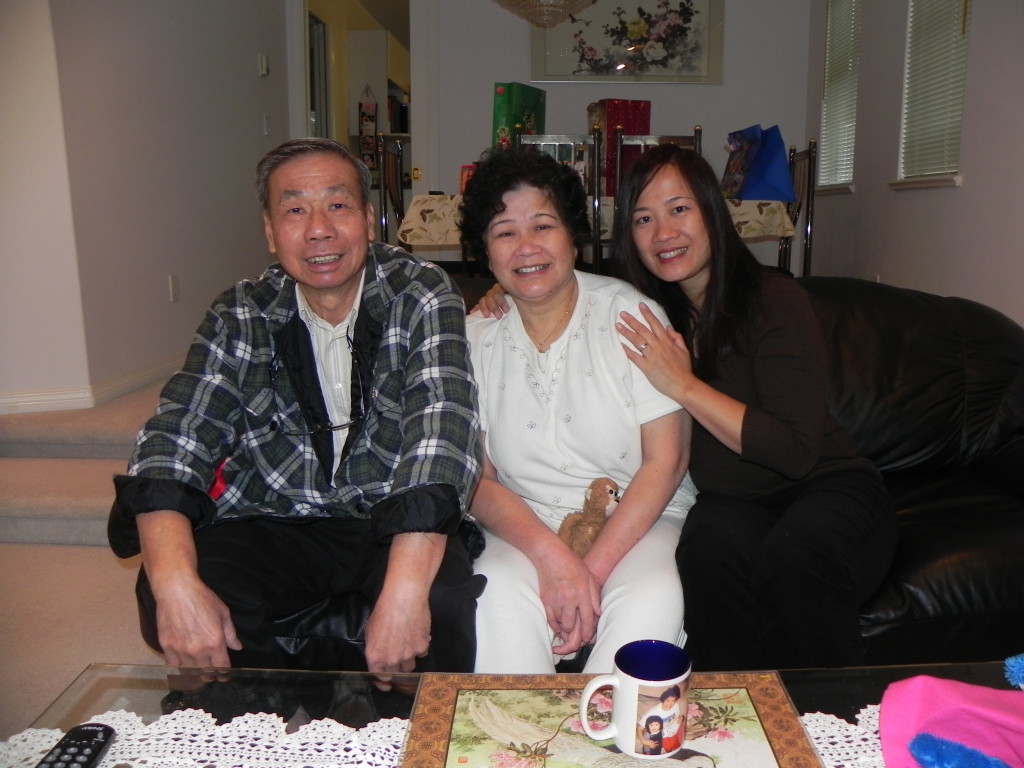
Arm-Wrestling with a Tibetan Monk

I came across this old photo and a flood of memories came back: I was arm-wrestling with a Tibetan monk at a Buddhist monastery just outside of Lhasa. What started off as a joke turned into a serious arm-wrestling match. And when I lost (even after using both arms), I had to down a cup of yak butter tea, which was a strange concoction of bitter tea with a thick film of yak butter on top. Not too tasty. But I was glad to drink it because all the monks I met were so good-natured and generous. I found the Tibetans to have a wonderful sense of humor and a positive attitude, despite the hardships they often face. Moments like these remind me of how the best parts of traveling are not so much the places we see, but the rich and heartfelt experiences we share with the locals.
What Did This Place Look Like Back in the Day? Imagining Sukothai, Thailand

As people flock to temples in Asia, some new, some old where the beautiful sculptures are still relatively intact, I like to hang around the ruins that look like...well they look like ruins. Temple columns with exposed bricks. Heads of Buddhist statues lopped off. Faint resemblance of a sculpted story of a battle chiseled on a temple wall. I enjoy marveling these ruins so that I can wonder "What was once here? How majestic had this looked back in the day?"
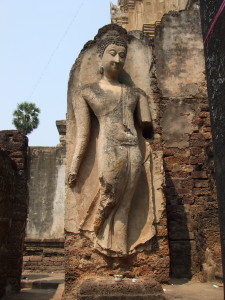
In the Sukothai Historical Park in Thailand, I discovered temple ruins with gigantic statues of Buddhas, Boddhisatvas and also elephants, all of which had seen their heyday back in 12th - 13th Century.
The beauty of traveling to Sukothai is being able to view a snapshot in time of this once great palace area resplendent with colorful statues and walkways. Now it's a UNESCO heritage site for thousands of tourists every year, and it's a quiet tourist destination that is often overlooked on the map for those in favor of Chiang Mai, Bangkok or the number of gorgeous islands in Thailand. I loved my brief time in Sukothai as I wandered around and imagined the hustle and bustle of this once great kingdom that ruled for 200 years.

